Abstract
In tube dilution studies, large discrepancies between inhibitory and bactericidal concentrations of BL-P1654 against Pseudomonas were observed. To explain these discrepancies which were not observed with carbenicillin, the kinetics of bacterial killing by these two penicillins were evaluated and compared. The kinetics of bacterial killing by both antimicrobial agents were characteristic of a penicillin, with killing initiating simultaneously with growth. Kill curves revealed the presence of a small number of cells resistant to BL-P1654 which were not detectable macroscopically. Studies on microbial resistance also showed the presence of a small but consistent number of cells resistant to BL-P1654 over a broad range of concentrations above its minimal inhibitory concentration. This pattern of resistance was not observed with carbenicillin. Thus, the discrepancies between inhibitory and bactericidal concentrations of BL-P1654 were not due to any unusual bacteriostatic activity but rather due to a small number of resistant cells whose presence could be detected only by sensitive subculturing techniques.
Full text
PDF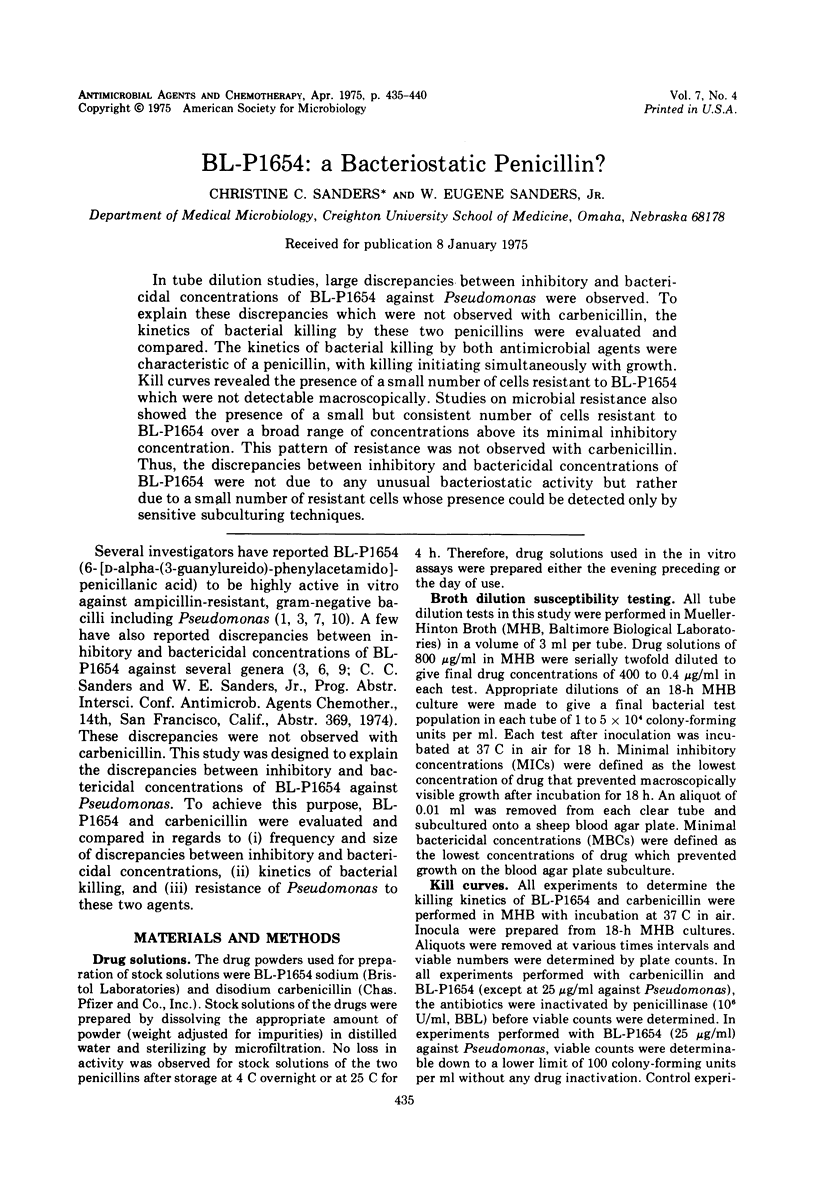
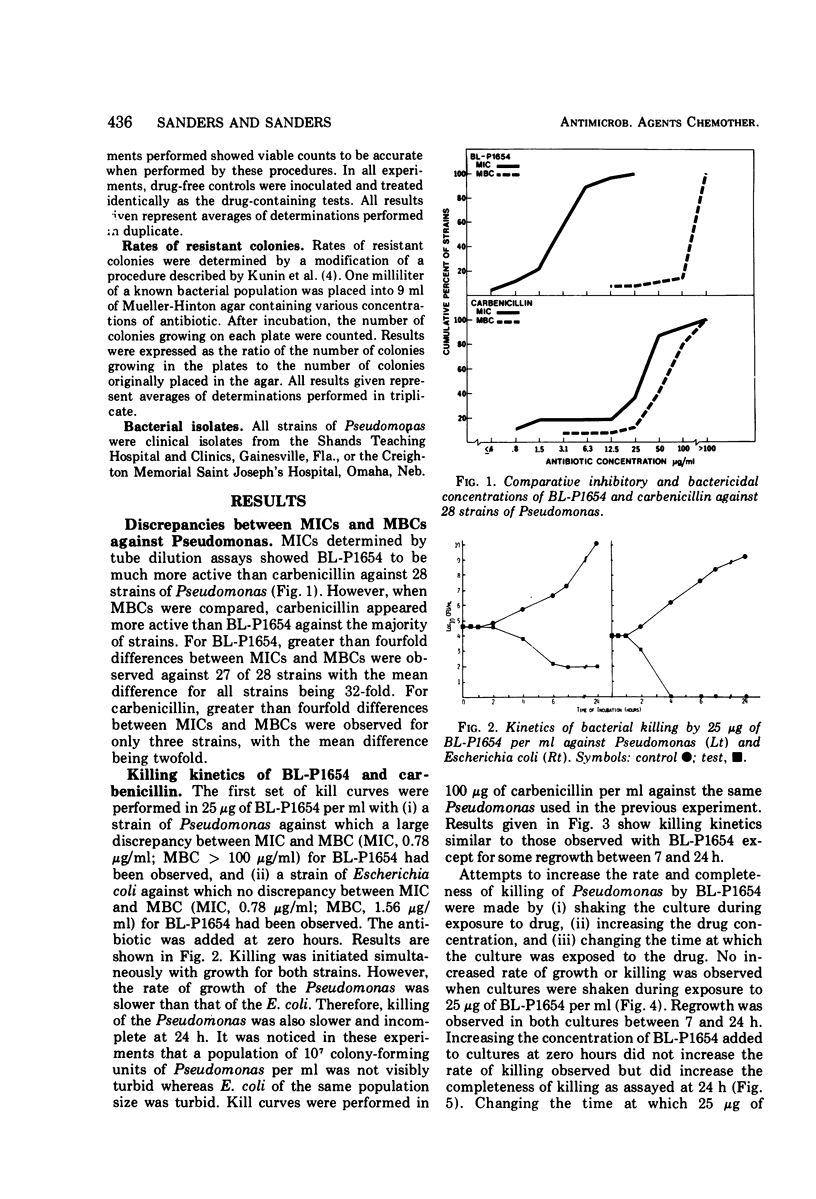
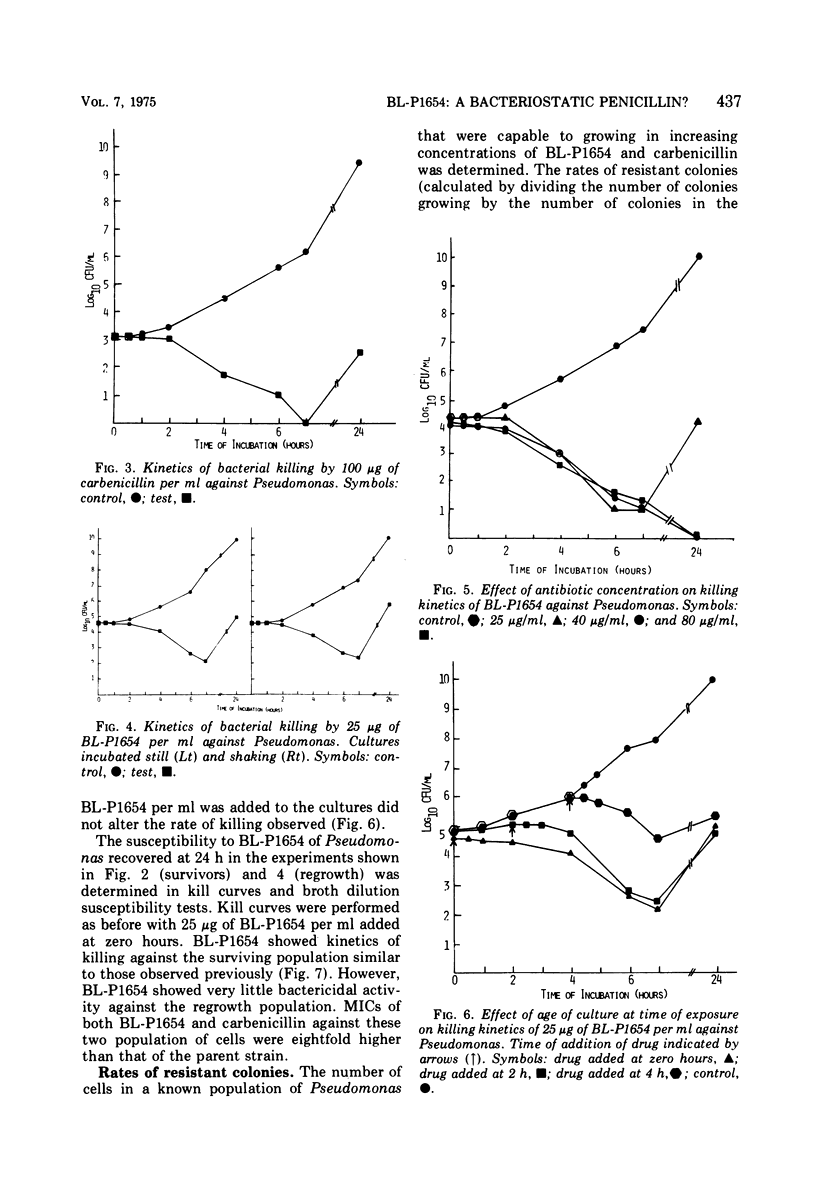
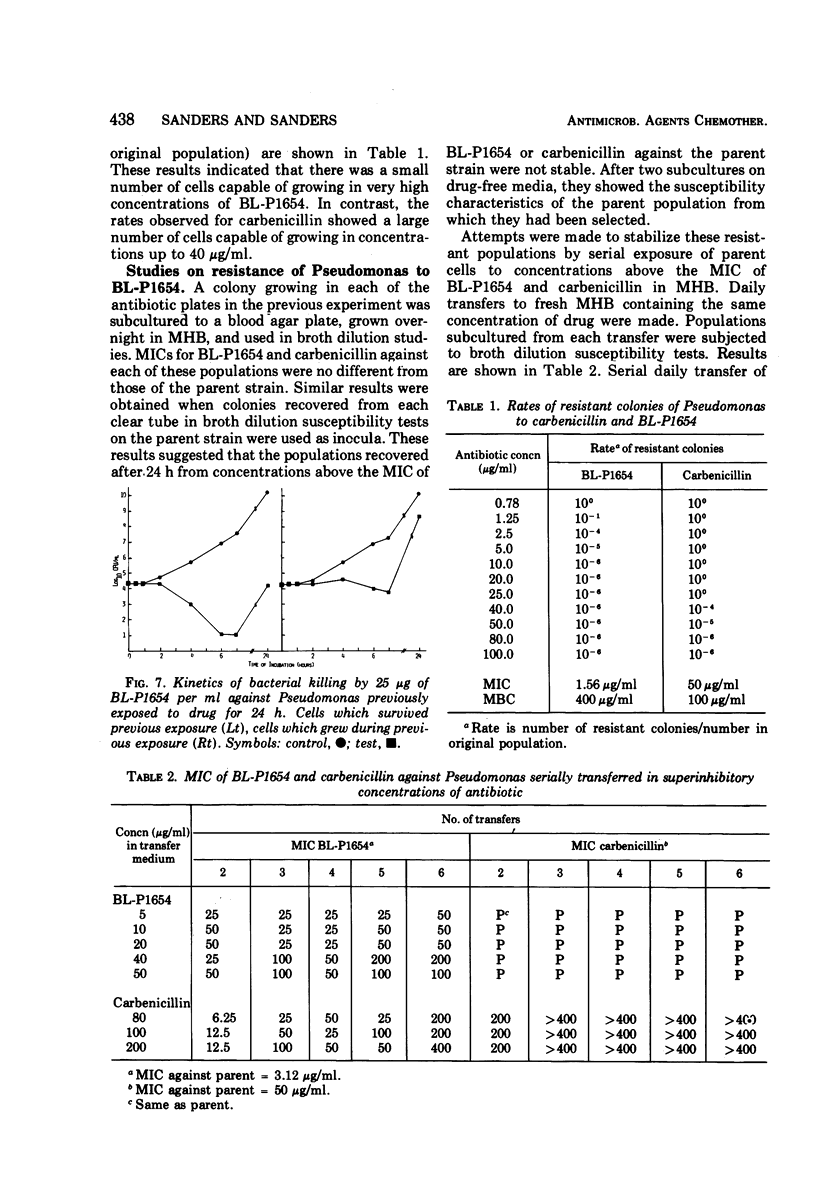
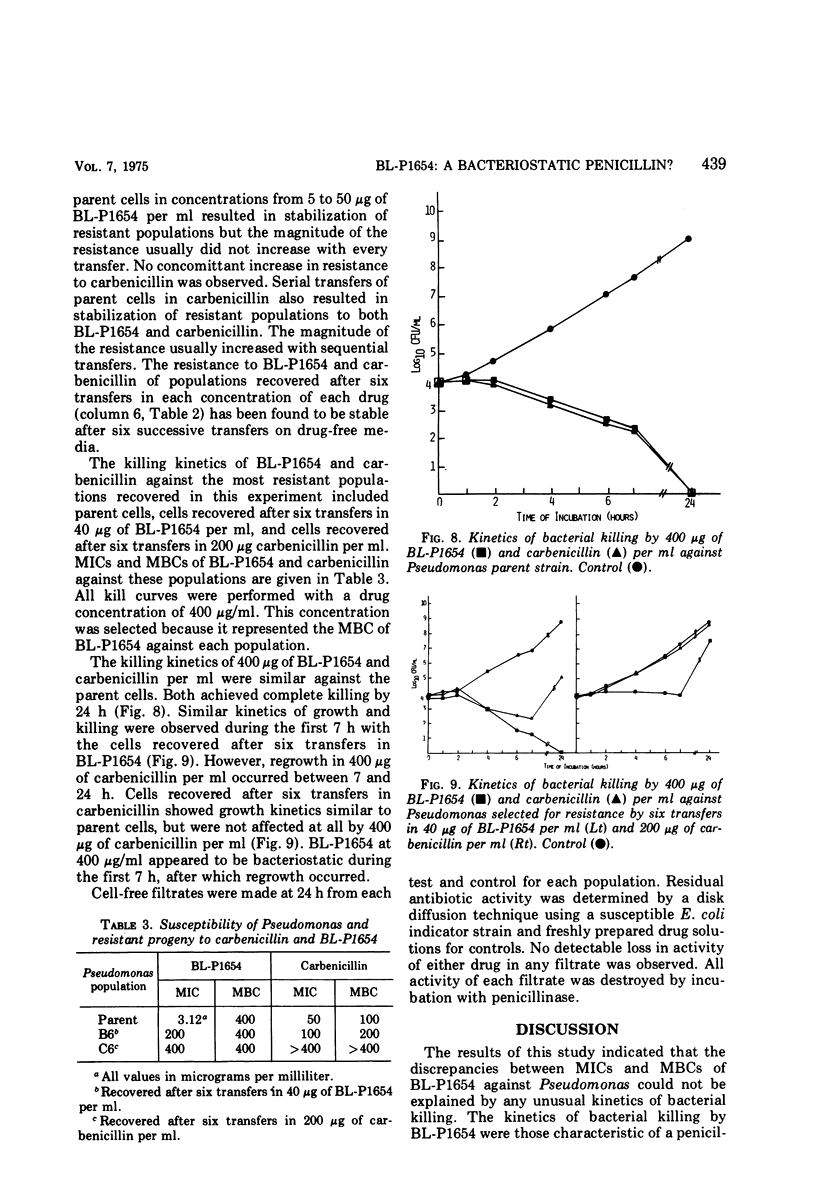
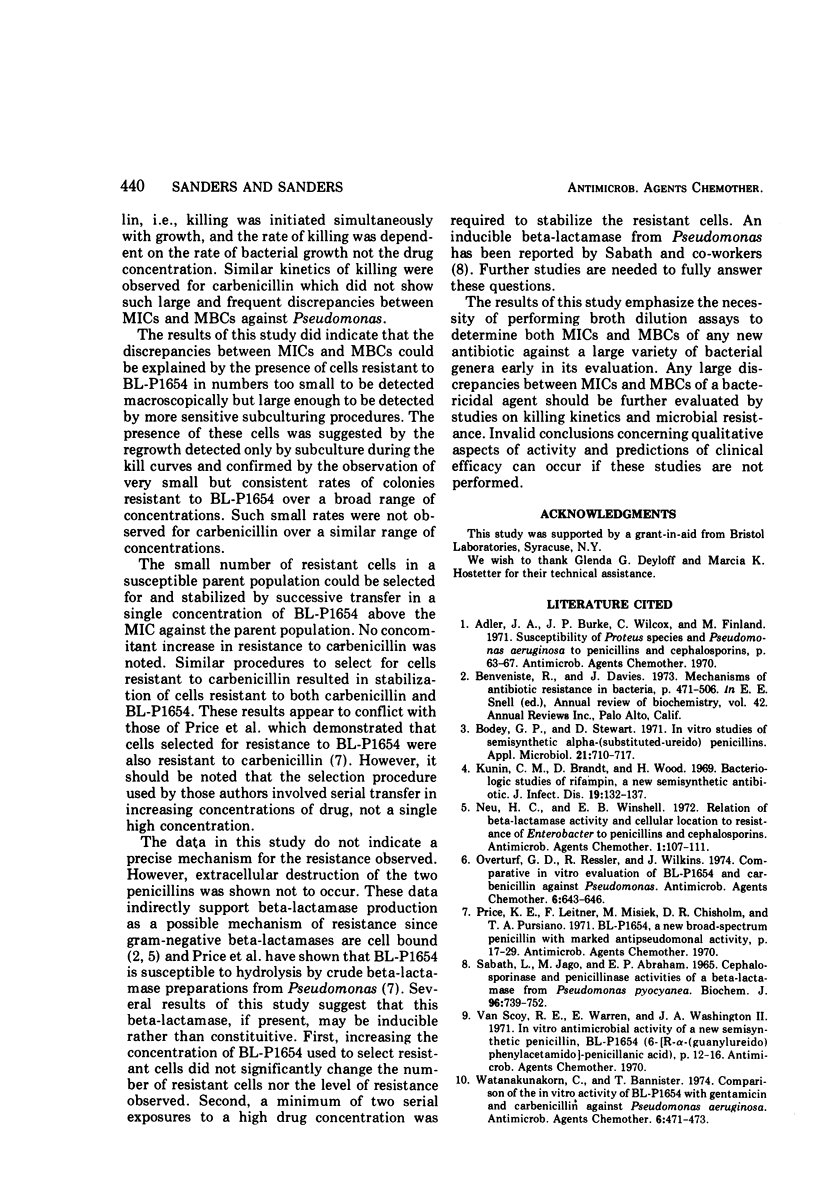
Selected References
These references are in PubMed. This may not be the complete list of references from this article.
- Benveniste R., Davies J. Mechanisms of antibiotic resistance in bacteria. Annu Rev Biochem. 1973;42:471–506. doi: 10.1146/annurev.bi.42.070173.002351. [DOI] [PubMed] [Google Scholar]
- Bodey G. P., Stewart D. In vitro studies of semisynthetic alpha-(substituted-ureido) penicillins. Appl Microbiol. 1971 Apr;21(4):710–717. doi: 10.1128/am.21.4.710-717.1971. [DOI] [PMC free article] [PubMed] [Google Scholar]
- Kunin C. M., Brandt D., Wood H. Bacteriologic studies of rifampin, a new semisynthetic antibiotic. J Infect Dis. 1969 Feb;119(2):132–137. doi: 10.1093/infdis/119.2.132. [DOI] [PubMed] [Google Scholar]
- Neu H. C., Winshell E. B. Relation of beta-lactamase activity and cellular location to resistance of Enterobacter to penicillins and cephalosporins. Antimicrob Agents Chemother. 1972 Feb;1(2):107–111. doi: 10.1128/aac.1.2.107. [DOI] [PMC free article] [PubMed] [Google Scholar]
- Overturf G. D., Ressler R., Wilkins J. Comparative in vitro evaluation of BL-P1654 and carbenicillin against Pseudomonas. Antimicrob Agents Chemother. 1974 Nov;6(5):643–646. doi: 10.1128/aac.6.5.643. [DOI] [PMC free article] [PubMed] [Google Scholar]
- Sabath L. D., Jago M., Abraham E. P. Cephalosporinase and penicillinase activities of a beta-lactamase from Pseudomonas pyocyanea. Biochem J. 1965 Sep;96(3):739–752. doi: 10.1042/bj0960739. [DOI] [PMC free article] [PubMed] [Google Scholar]
- Watanakunakorn C., Bannister T. Comparison of the in vitro activity of BL-P1654 with gentamicin and carbenicillin against Pseudomonas aeruginosa. Antimicrob Agents Chemother. 1974 Oct;6(4):471–473. doi: 10.1128/aac.6.4.471. [DOI] [PMC free article] [PubMed] [Google Scholar]


